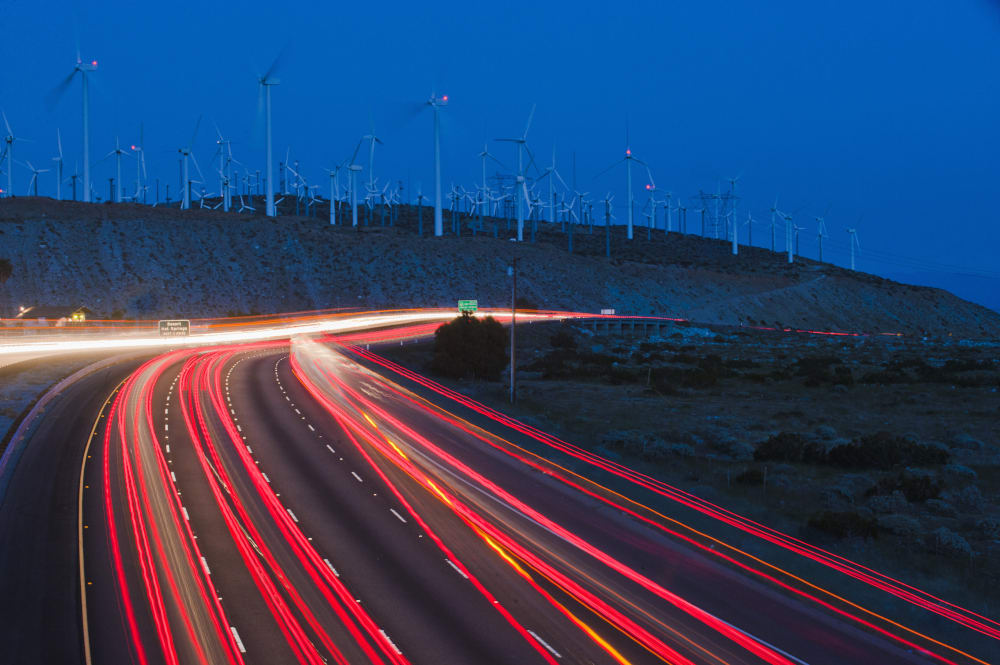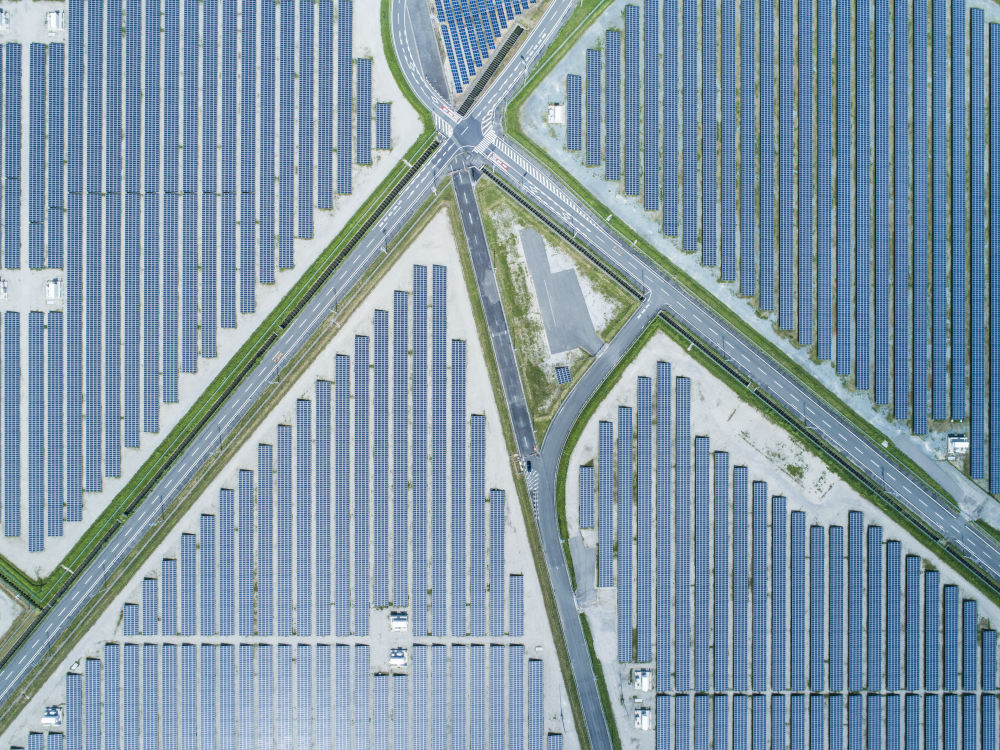Australian firmed solar overtakes wind projects
Australian developers are turning to solar and batteries after rising turbine, building and transmission costs have made new wind projects uneconomical, reports Rob Clow
It felt like a surprising admission for a storage investor.
“I actually think batteries are pretty scary,” David Scaysbrook, co-founder of Quinbrook Infrastructure Partners told the Infralogic Investors Forum (IIF) in Sydney in March.
It felt even more surprising the following day when Quinbrook unveiled plans to develop 3 GW of eight-hour batteries in Queensland and the Northern Territory.
Scaysbrook is most nervous about batteries’ rapid obsolescence. Quinbrook tries to protect its battery investments with long-term tolling agreements because today’s cutting-edge batteries can be superseded in a year.
But the rapid developments in battery technology and the precipitous falls in battery prices have also meant that the Australian renewables market has reached an inflection point.
Greenfield wind developments are being priced out of the market, while batteries and solar hybrid projects are taking off.
Last year, when Australian standalone solar projects were routinely being curtailed due to an oversupply of rooftop solar during the day, owners and developers of wind projects had reason to feel pretty good.
It is still a good time to buy operating wind projects. HMC Capital has agreed to acquire Neoen’s Victoria portfolio for less than replacement cost and Atmos Renewables bought the Cattle Hill wind farm in Tasmania for close to its original project cost.
But the cost of building new wind projects has spiked dramatically. A few years ago, when Brad Hopkins was working for the New South Wales government’s EnergyCo, all the analysis pointed towards wind playing an important role in the Australian energy transition. At the time, new wind cost AUD 1.5-2m per MW to build, he told the IIF attendants.
New wind now costs around AUD 4m per MW to build after surges in construction costs and increased turbine prices, he said.
And that is not the whole story.
“To get new wind you need to build new transmission,” explains Hopkins, who is now a partner at Stonepeak-backed AGP Sustainable Real Assets, which is developing AMPYR Energy’s battery platform. Unexploited windy areas tend to be well away from the electricity load, but new transmission costs have also risen from AUD 1m per MW to AUD 2m per MW.
Solar generation can be built anywhere around Australia.
Standalone solar still makes no sense in an Australian market with solar panels on the roofs of four-million households, but solar projects with batteries can charge up in the middle of the day when power prices are often negative and sell electricity at the beginning and the end of the day when solar panels are not working.
They are also more than able to compete with the AUD 6m per MW all-in cost of building new wind.
New build solar typically has trended down from over AUD 2m per MW in 2017 to just over AUD 1m per MW at the start of last year, according to the Clean Energy Council, an Australian industry advocacy body.
In the same period battery costs have fallen from well over AUD 2m per MWh to less than AUD 500,000 per MWh, according to the CEC.

“There has been an extraordinary drop in battery prices,” Hopkins said, adding, “For the energy sector that flips a lot of things on its head.”
The most immediate impact has been a flood of new battery capacity coming into the Australian market. In February, the CEC estimated that there were 52 committed storage projects currently in development, equivalent to 10.5 GW/26.3 GWh in capacity/energy output.
Batteries are earning a return of 7-11% and sometimes even more from buying power in the middle of the day when solar power is abundant and prices are often negative and selling electricity in the evening, when the sun has stopped shining, according to recent results briefings from AGL Energy and Origin Energy. The two Australian retailers and generators are keen to own storage but less enthusiastic about owning renewables generation.
The question that storage owners will increasingly have to answer, however, is how long their arbitrage profits – from buying something in the middle of the day and selling the same thing in the evening – will last. Arbitrages are meant to disappear from a market as more players crowd in to take advantage of them.
For now, batteries’ share of the market appears pretty modest. The Australian Energy Market Operator’s (AEMO) latest Quarterly Energy Dynamics report released this month says that batteries contributed an average output of 98 MW of power to the National Electricity Market, compared to grid-scale solar generation of around 2.4 GW, wind generation of around 3.5 GW, average black coal-fired generation of 10.3 GW and brown coal-fired generation of 3.4 GW.
But battery generation is growing swiftly from a low base – up 86% in the quarter, according to AEMO.
Furthermore, Australia’s recently re-elected Labor government has pledged that it will roll out an AUD 2.3bn Cheaper Home Batteries Program, reducing the cost of a typical installed household battery by 30%. Labor expects this to subsidise the installation of one million new batteries by 2030.
Investors in Australian utility-scale solar have seen the rapid take-up of rooftop solar eat into their profits. The addition of household batteries could theoretically do the same thing to investors in utility-scale batteries.
The UK’s decision to scrap Value Added Tax on household batteries at the beginning of last year appears to have boosted supply of small- and large-scale batteries and reduced prices across the board, but Morgan Stanley is less upbeat about the Australian situation.
“AGL and Origin target National Electricity Market (NEM) utility-scale battery investment of ~AUD 6b by 2030, at ~11% post-tax IRRs, at least in the early years,” Morgan Stanley utility analysts said in a recent research note.
“The Australian Government’s Cheaper Home Batteries Program targets an additional ~1m household batteries by 2030, which, if installed, would be a material negative for AGL and Origin utility-scale battery returns, in our view.”
“For wholesale markets, we estimate that the government target equates to 11GW/15GWh by 2030, about the same as utility-scale capacity currently installed or under construction,” the research note adds without quantifying the expected declines in returns.
The bullish case for wind
One developer, who recently reached financial close on a solar and battery project, is not ready to give up on his wind projects because they are still years away from financial close and construction.
“Now is the time to buy wind development projects in Queensland because they will need those projects to come online,” says Matt Baumgurtel, Partner and New Energy Lead at Hamilton Locke in Sydney, arguing that Queensland’s decision to slow the wind planning process will not last.
“I don’t think you’ll have eight years of hiatus. I think you’ll have four at the most. And the reality is you weren’t going to be ready to lodge for development approval in Queensland for a wind project for at least three years. You’ve got to do bird/bat [wildlife checks], which is at least 18 months. You’re probably going to have to get through [Environment Protection and Biodiversity Conservation] EPBC [approvals].”
Getting wind turbines from the big European manufacturers also takes years, he adds.
Ultimately, Baumgurtel and the developer agree, Australia will need every green electron it can get. In its recent results announcement AGL estimated that Australian power demand will increase by 90% over the next 25 years, driven by the increased uptake of electric vehicles and data centre growth.
That demand growth will take place at the same time as Australia retires its aging fleet of coal-fired power stations, which still provide around 60% of the country’s power.
Baumgurtel thinks that planning approvals in New South Wales are already accelerating. “Yanco Delta was the first, but you’ll see eight or potentially 10 wind farms be approved in New South Wales this year,” he says.
Increasingly, Baumgurtel also believes that inland wind, technically referred to as diurnal wind, is coming online.
“Diurnal wind is very valuable. So the good thing about diurnal wind is typically it’s inland. You’ve got effectively late afternoon, early evening wind, which is what you get inland. Copperstring, [Project EnergyConnect],” he adds, referring to two of Australia’s biggest transmission projects. “This is all diurnal wind.”











